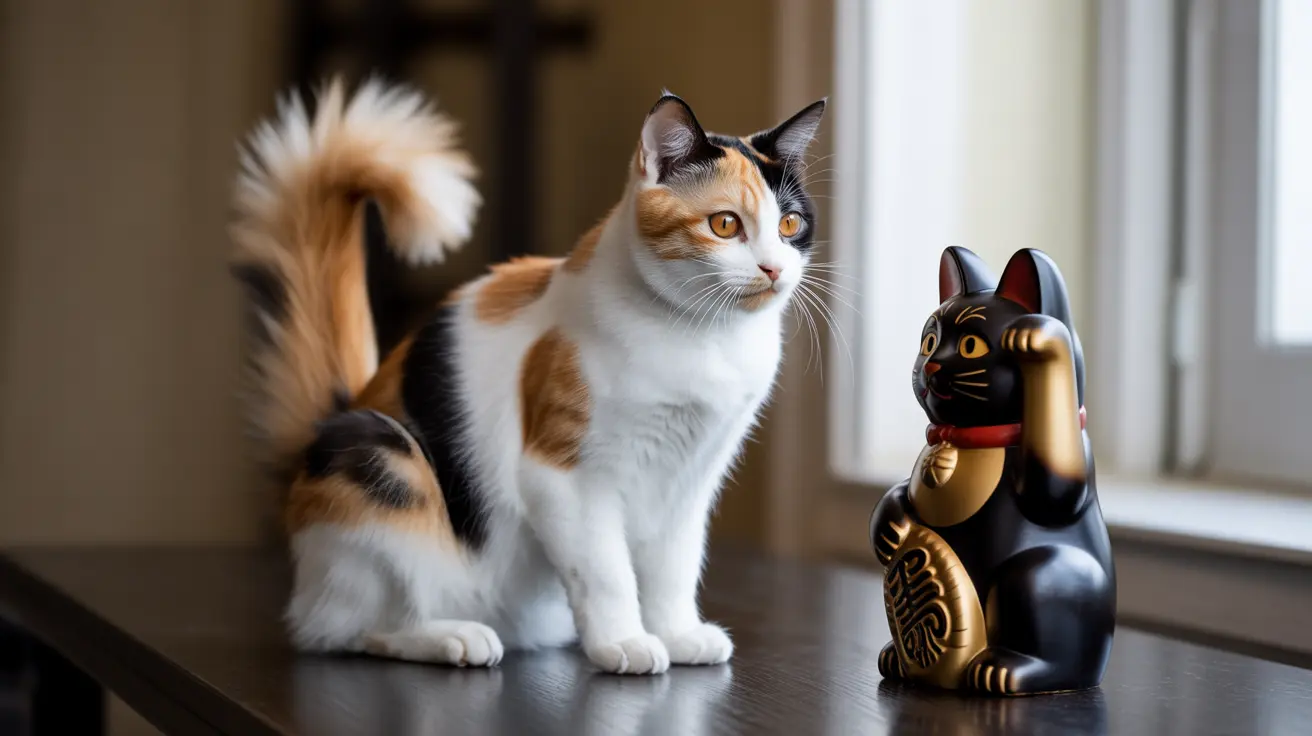Historical Roots of Cats in Japanese Society
Cats first arrived in Japan during the 6th century AD, brought by Buddhist monks from China to protect precious religious texts from rats. These early feline immigrants quickly proved their worth, earning them an elevated status in Japanese society. Initially rare and precious, cats became highly valued possessions among the nobility, with some even receiving court ranks.
During the Edo period (1603-1868), cats became more widespread throughout Japan, cementing their place in both practical life and cultural expression. Their role in protecting valuable silk productions from rodents made them economically important, while their graceful nature inspired countless artists and writers.
Spiritual and Cultural Significance
In Japanese folklore and spiritual traditions, cats hold a special place as both protectors and mysterious beings. The famous Maneki-neko (beckoning cat) statue, seen in shops and homes across Japan, represents good fortune and prosperity. This cultural icon emerged during the Edo period and continues to be one of Japan's most recognizable symbols.
Unlike Western superstitions about black cats bringing bad luck, Japanese culture traditionally views black cats as bearers of good fortune. This positive association stems from their ability to see in darkness and their perceived power to ward off evil spirits.
Modern Expression of Cat Love in Japan
Today's Japan demonstrates its feline affection through various unique manifestations. Cat cafés, which originated in Tokyo in the late 1990s, have become popular destinations where people can enjoy feline company while sipping coffee. These establishments particularly appeal to urban dwellers who cannot keep pets in their apartments.
The country's pop culture landscape is dominated by cat characters, from beloved anime figures like Luna from "Sailor Moon" to viral internet sensations like Maru. Even Japan's tourism industry has been influenced by this feline fascination, with "cat islands" like Aoshima and Tashirojima becoming popular destinations.
The Practical Appeal of Cats in Japanese Life
Modern Japanese lifestyle factors contribute significantly to cats' popularity. With many people living in small urban apartments, cats' independent nature and lower maintenance requirements make them ideal pets compared to dogs. Their quiet demeanor and ability to adapt to indoor living align perfectly with Japanese urban living conditions.
The Japanese pet industry has responded to this preference with an impressive array of cat-related products and services, from sophisticated cat furniture to gourmet cat food, reflecting the high value placed on feline companions.
Frequently Asked Questions
Why are cats considered symbols of good luck and fortune in Japanese culture?
Cats are considered lucky in Japanese culture due to their historical role in protecting valuable assets from rats and their association with prosperity through the Maneki-neko symbol. Their ability to see in darkness also led to beliefs about their power to ward off evil spirits.
How did cats originally arrive in Japan, and what historical role did they play?
Cats arrived in Japan around the 6th century AD with Buddhist monks from China. They were initially brought to protect sacred texts from rats but quickly became valued members of society, particularly among the nobility and later as protectors of the silk industry.
What makes the Japanese Bobtail breed unique and popular in Japan?
The Japanese Bobtail, characterized by its distinctive short "bobbed" tail, is Japan's native cat breed. It features prominently in traditional art and folklore, and its friendly, intelligent nature has made it a beloved breed both in Japan and internationally.
How do Japanese cat cafés reflect the country's cultural affection for cats?
Cat cafés in Japan provide a unique solution for urban residents who cannot keep pets at home. These establishments reflect the Japanese appreciation for cats while offering a therapeutic space where people can relax and enjoy feline company in a controlled environment.
What traditional Japanese beliefs and folklore involve cats as spiritual or supernatural beings?
Japanese folklore features various cat-related beliefs, including the nekomata (supernatural two-tailed cats) and bakeneko (shape-shifting cat spirits). These stories reflect the traditional view of cats as mysterious beings with supernatural powers, capable of bringing both good fortune and, occasionally, misfortune.






